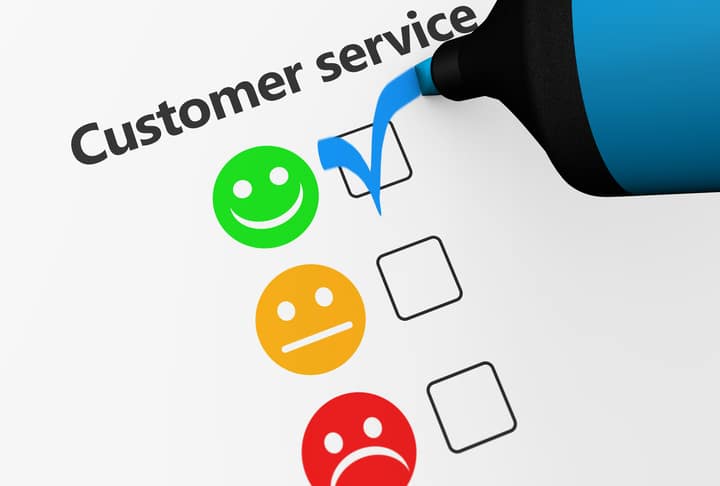Those who work in customer service have all heard – and probably memorized – the mantra, “The customer is always right.”
However, that doesn’t cut it anymore when it comes to customer relations. It’s not enough for your customer to be right. They also have to be happy.
In the age of social media, when brands are brought into customers’ homes not only through product purchase but also through Facebook feeds, Twitter mentions, and Snapchat stories, it is more important than ever to have a positive, proactive relationship with customers.
This isn’t a job only for Fortune 500 companies, either. Small- and medium-sized businesses can benefit even more from customer happiness since word-of-mouth and peer recommendations are so critical to these small but mighty companies.
Here are five simple steps any company can make to improve customer happiness.
1) Treat Customers Like People, Not Dollar Signs
Think about your most successful relationships – with spouses, business partners or friends. They are based on open communication, trust, and shared values.
It may sound trite, but you are going to have to use those same building blocks to create a strong, happy following for your business as well. So be kind. Be responsive. Be genuine. Don’t see every customer as a sale, see them as a person.
2) Use Data to Set Customer Expectations
As with lots of relationships, managing expectations, and transparent communications are key. Thankfully, technology makes this easier than ever.
You’ve probably seen response rate data on company Facebook pages, letting customers know page administrators typically respond. Is it a matter of hours, days, weeks or longer? A quick response time is the sign of an engaged business.
Similarly, for those companies who depend on phone calls with customers, average wait time is an important measurement. Efficient call centers are reported to have an average wait time between 15 and 40 seconds between live calls for an agent when on an outbound predictive dialing campaign.
Understanding and reporting your average response times up front can set realistic expectations for your customers, and can establish a sense of transparency and honesty early on in your relationship with a potential client.
3) Every Employee Is a Spokesperson
Maybe you’ve established that you or another manager is the official spokesperson for your company with the media, which is a best practice.
In the age of social media, every employee acts as a type of spokesperson. They are communicating your company’s culture and values to every customer they interact with. For example, if you are running a call center or if your customers simply contact your business regularly, the over-the-phone interaction is a critical one.
A grumpy calling agent will negatively impact your potential customers’ opinion of your company. A polite, happy calling agent who goes above and beyond for the client can create a customer for life.
4) Admit and Correct Mistakes Quickly
Look, no one is perfect. No matter how many checks and balances you have in your pipeline, chances are something will get messed up at some point. You might feel pressure to place blame somewhere else, justify the mistake in some way or ignore it and hope they never notice it.
Those are all the wrong choices. A real leader can overcome adversity, and it will build trust with your customers and clients. Whether it is an incorrect price quote, a poor customer experience with an employee or a missed meeting with a potential client, just own your business mistake, correct it and move on.
5) Establish an Attitude of Gratitude
You may think the transaction with your customers is over when they’ve paid for your goods or services. You’ve got what you want, and they’ve got what they want. Done deal. Or is it?
Always follow up every transaction with a thank you message that is as personalized as possible. Research shows that as many as 82 percent of customers will leave if they don’t feel the love. Some companies offer discount codes for the customers’ next purchase, others shoot off an easy thank you email with some suggestions of other purchases to consider. For your largest or most frequent customers, you may want to call or write a handwritten note.
No matter your approach, always thank your customers to ensure they are happy with the experience.
Happy customers will tell friends and family about your company. They will post about your product to social media and write online reviews. They are, in short, priceless ambassadors of your brand. Improve customer happiness today, and you’ll improve your bottom line.
Originally published Jan 20, 2017, updated Aug 12, 2020





